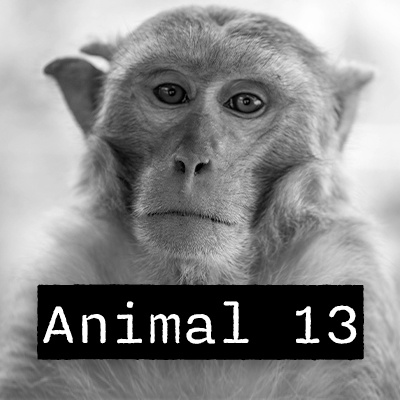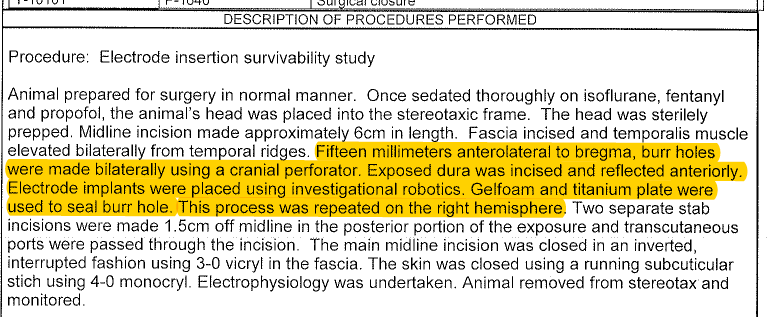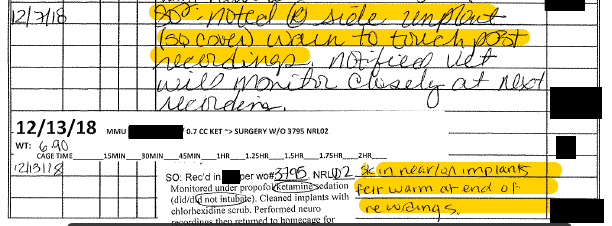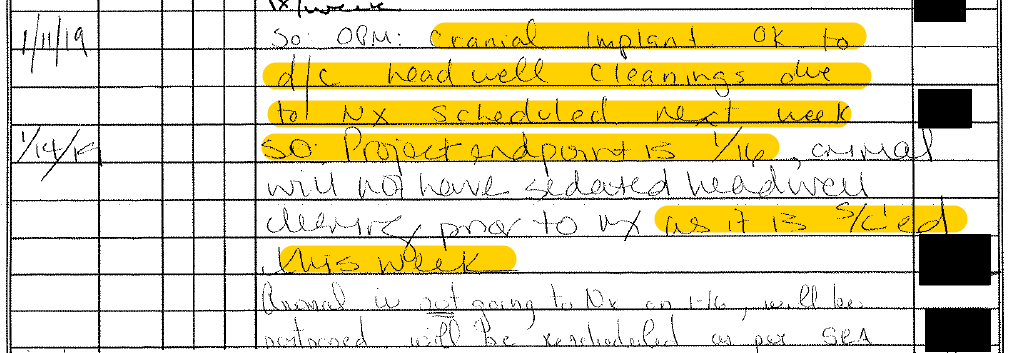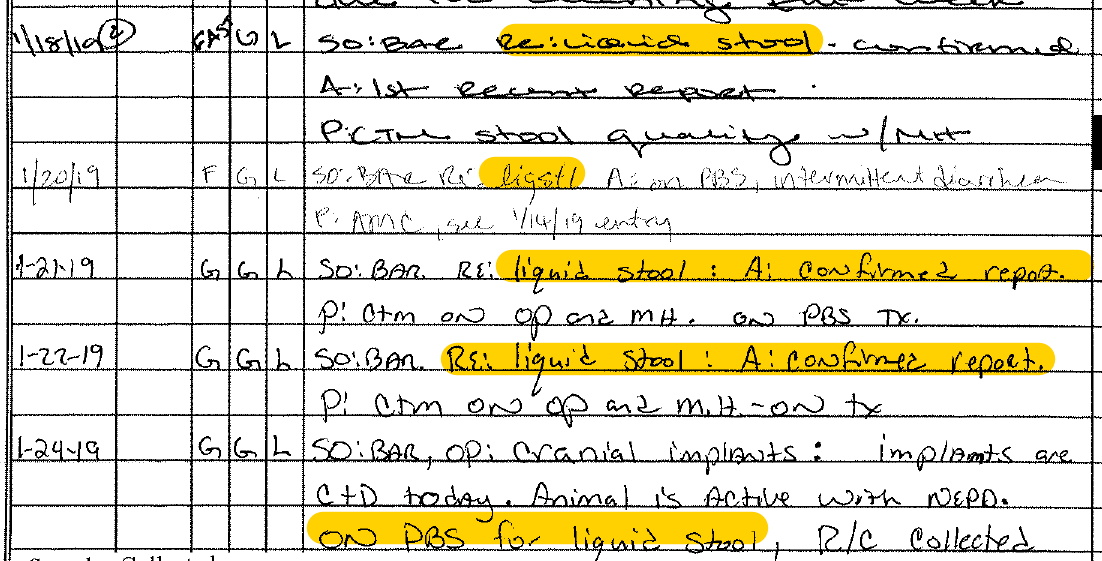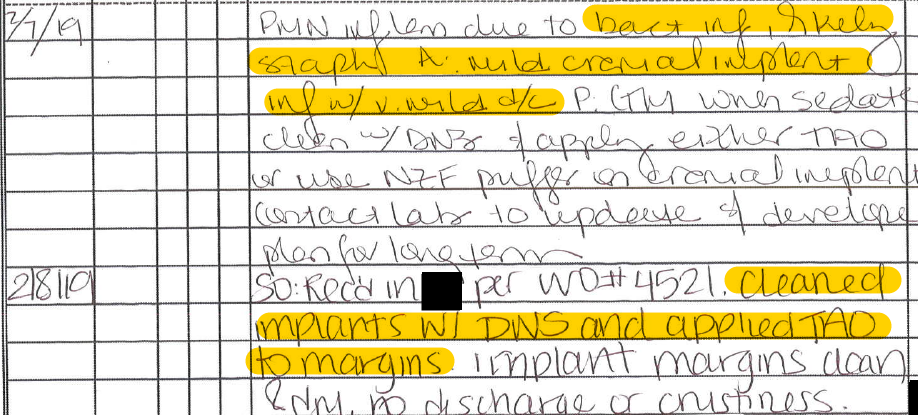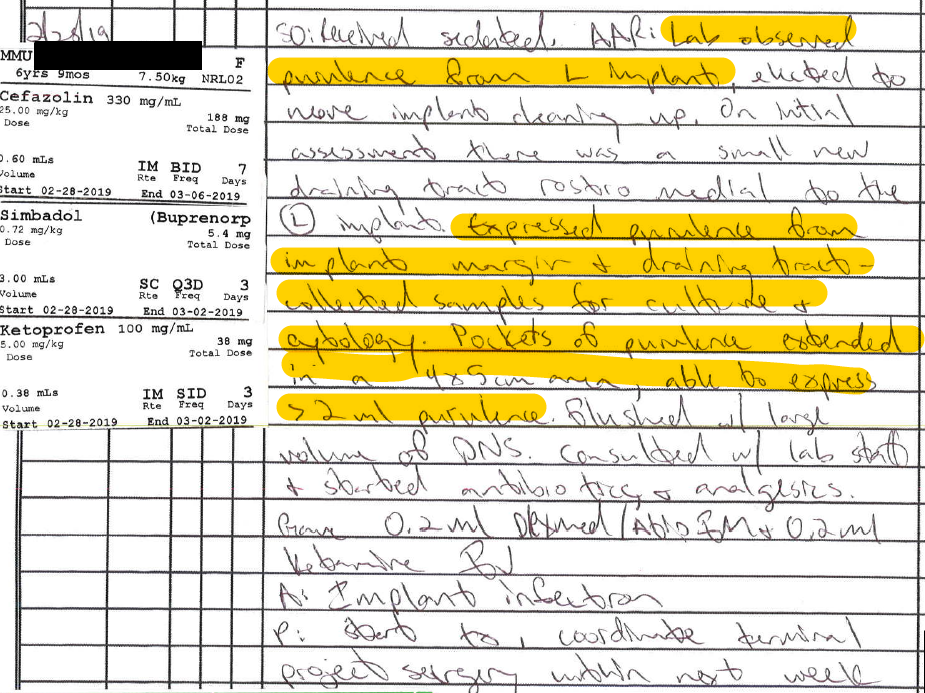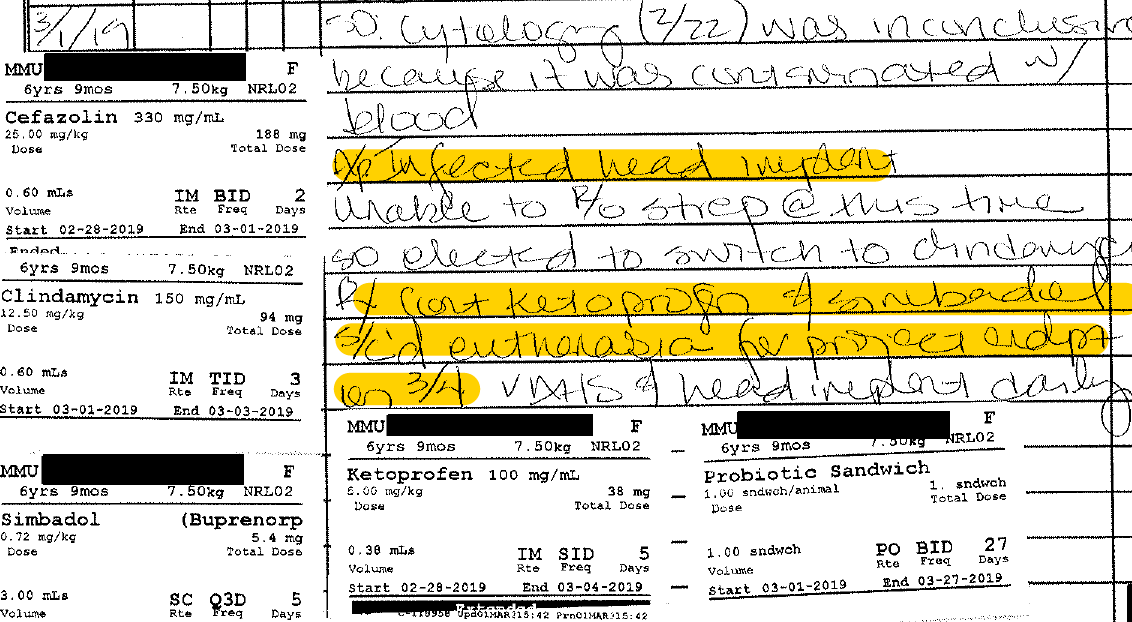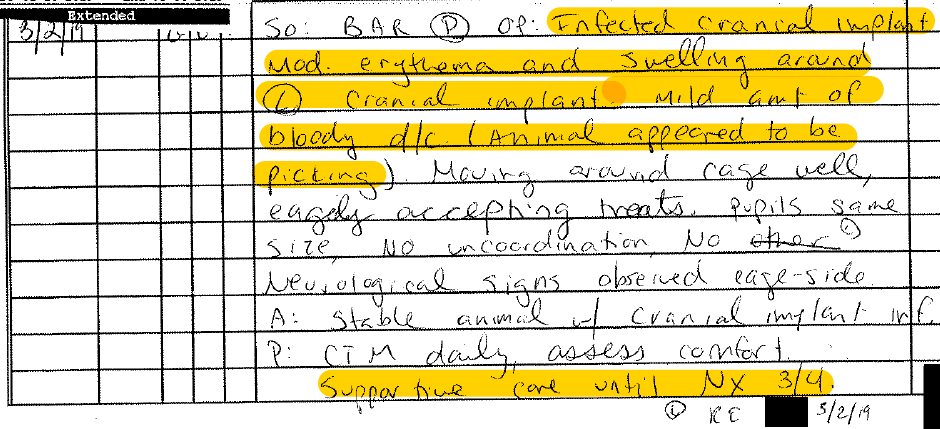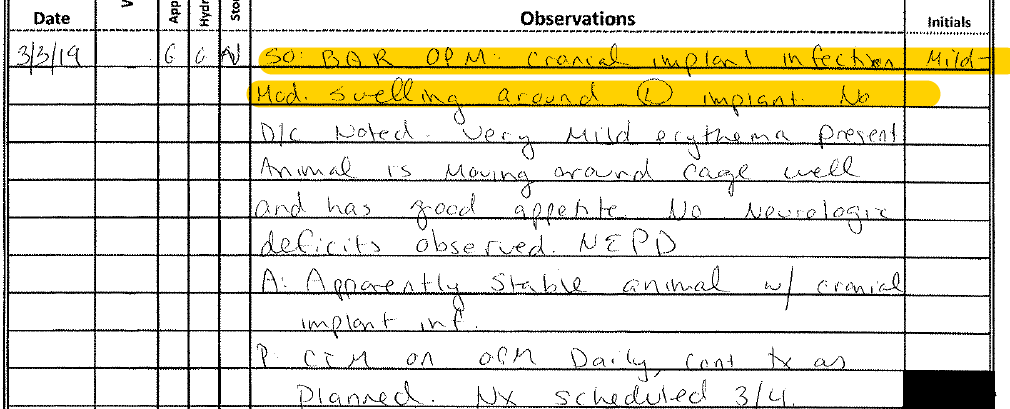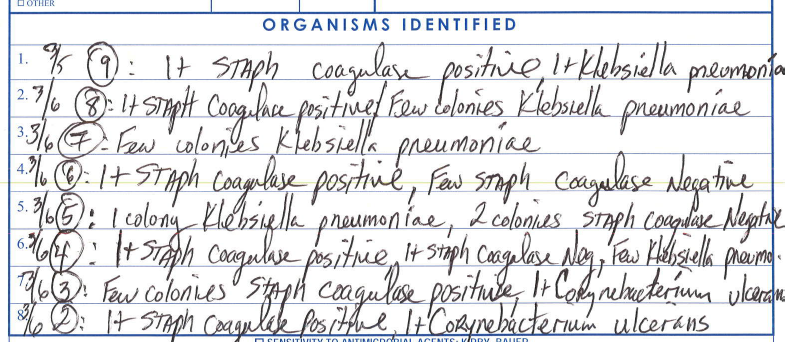Animal 13
Through 2020, Elon Musk’s company Neuralink paid $1.4 million to the University of California, Davis, to use its facilities, where experimenters removed portions of monkeys’ skulls to implant electrodes in the animals’ brains related to the development of a “brain-machine interface.” Only in 2022, following a public records lawsuit by the Physicians Committee for Responsible Medicine, did the troubling details of these experiments begin to come to light. The company is still conducting experiments on animals at its facilities in California and Texas.
This is the story of one monkey, “Animal 13.” She was a 6-year-old macaque at UC Davis when she was assigned to a Neuralink experiment in October 2018. She had already had recurring diarrhea and had experienced two episodes of “trauma.”
Animal 13’s records indicated that she had recently experienced “lip trauma” from a suspected fight with another monkey in the laboratory.
On Oct. 22, 2018, Neuralink experimenters drilled holes into her skull, exposing her brain, and then used a robot to place two implants in her brain. A titanium plate covered the holes and was attached to her head using bone screws, and her skin was stitched up around the brain implants.
Beginning on Nov. 1, Animal 13 was regularly injected with ketamine, removed from her cage, strapped to a restraint device, and had her brain hooked up to recording instruments so Neuralink could measure brain activity. This occurred on at least 12 occasions.
During these recording sessions, the electronic instruments implanted in Animal 13’s brain would heat up so much that the outside skin would feel warm to the touch.
On Jan. 11, 2019, UC Davis staff wrote that they would discontinue implant cleanings because the animal will be “s/c’ed” (meaning “sacrificed”) by Neuralink the following week. However, on Jan. 14, they wrote this was postponed.
On Jan. 18, staff noted that Animal 13 had liquid stool and put her on probiotic sandwiches to try to treat this condition.
On Jan. 25, Animal 13 had a cut on her right pointer finger.
On Feb. 7, Animal 13 had discharge coming from her head implant, which UC Davis staff believed was likely a staphylococcus infection. The following day they cleaned the implants and applied an antibiotic ointment.
Given Animal 13’s declining condition and worsening implant infection, UC Davis staff suggested that they “coordinate terminal project surgery within next week.”
As of March 1, Animal 13 was on a cocktail of medications including antibiotics, probiotics, and pain-relieving drugs. Lab staff wrote she should continue on this until “s/c’d” (i.e., killed) on March 4.
As of March 2, Animal 13’s left head implant was still infected and causing swelling in the surrounding area. The implants were bloody, and Animal 13 was picking at them.
As of March 3, Animal 13’s left head implant was still infected and swollen.
On March 4, Animal 13 was killed and Neuralink performed a necropsy, which noted evidence of meningitis and confirmed the presence of many bacterial organisms in the area surrounding the brain implant.

